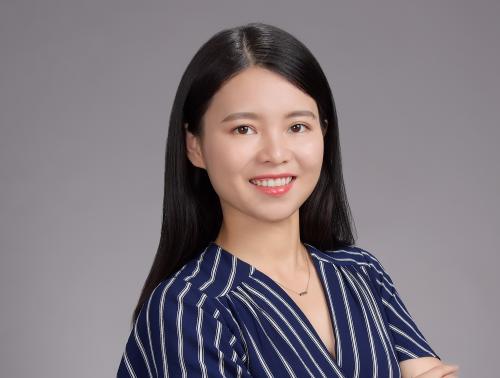师资
刘泉影博士,2019年9月加入南方科技大学,生物医学工程系副教授,博士生导师,神经计算与控制实验室(NCC lab)负责人。刘泉影博士毕业于瑞士苏黎世联邦理工(ETH Zurich)生物医学工程方向,在美国加州理工学院(Caltech)进行计算与数学科学方向的博士后训练。
刘泉影博士专注于类脑智能、多模态神经信号处理算法、脑网络动力学建模、神经优化控制。提出了高通道脑电溯源算法,解决了脑电溯源精度不高、位置不准、静息态脑网络无法有效提取的问题;提出了数据驱动的脑网络动力学建模方法,建立基于控制理论的神经刺激优化框架,解决大脑控制不准、控制不住的问题。
近5年,刘泉影在脑科学、人工智能、控制的交叉领域以一作或通讯作者身份发表SCI/EI学术论文40余篇,包括The Innovation, Neuroimage, Pattern Recognition, IEEE会刊等国际权威期刊,及NeurIPS, IJCAI, ACC等机器学习和控制顶会;译著《认知和行为的计算建模》;Google Scholar显示总引用2000余次,H因子23。申请专利12项;担任IEEE期刊IEEE J TRANSL ENG HE副主编、中国神经科学学会计算神经科学专委会委员、中国神经科学学会神经调控分会理事、中国人工智能学会脑机融合与生物机器智能专委会委员、中国生物医学工程学会医学人工智能专委会青年委员、深圳市电子学会新一代人工智能专委会秘书;讲授《机器学习与医学工程应用》、《人脑智能与机器智能》等课程。
NCC lab研究集中在机器学习算法、多模态神经信号处理、神经计算建模、神经调控、医学人工智能。结合动力学系统模型和深度学习模型研究神经信号表征,以探索大脑的计算机制,用于解释神经信号、大脑功能和人类行为三者之间的关系。
NCC lab长期招收硕士生、博士生、博士后、研究助理(RA)、访问学者、访问本科生。博士申请者要求先来NCC lab访问或做RA,通过考核,方可录用。
(请感兴趣的申请者把CV和personal statement发邮件给刘泉影老师)
研究方向
1)机器学习算法(深度生成模型、流形学习、图模型)
2)神经计算建模(神经表征、脑网络动力学)
3)多模态神经数据融合算法(DTI、fMRI、EEG、SEEG)
4)网络控制理论(Network control theory)
5)神经反馈控制(TMS、tDCS/tACS,Neurofeedback)
6)双向脑机接口(脑到机、机到脑)
教育经历
2013-2017 博士,瑞士苏黎世联邦理工学院,健康科学与技术学院。导师:Nicole Wenderoth, Dante Mantini
2010-2013 硕士,中国兰州大学,信息科学与工程学院,计算机软件与理论。导师:胡斌教授
2006-2010 本科,中国兰州大学,信息科学与工程学院,电子信息科学与技术。
研究经历
2025.05 - 至今,副教授 (博导),南方科技大学,神经计算与控制实验室PI
2019.08 - 2025.05,助理教授 (博导),南方科技大学,神经计算与控制实验室PI
2017-2019 博士后,美国加州理工学院,计算与数学科学学院 。导师: Dr. John Doyle
2017-2019 研究员,美国亨廷顿医学研究中心
2016-2017 访问学者,比利时鲁汶大学,运动控制与神经可塑性实验室
2014-2015 访问学者,英国牛津大学,实验心理学院
研究项目
2021.01-2023.12 国家自然科学基金青年科学基金项目 (主持)
2022.01-2025.12 科技部国家重点研发计划生物与信息融合专项项目(骨干)
2021.01-2022.12 深圳市科创委稳定支持计划面上项目 (主持)
2021.07-2023.06 深港澳科技计划(C类)项目 (主要参与人)
2021.01-2022.12 深圳市科创委可持续发展科技专项项目 (主要参与人)
2021.09-2022.09 教育部“港澳与内地大中小师生交流计划大学生项目” (主持)
2020.01-2022.12 广东省基础与应用基础研究基金项目 (主持)
2020.01-2020.12 广东省研究生学术论坛基金 (主持)
2018-2021 比利时FWO Fellowship (主持,3 years,因回国而放弃)
2017-2019 美国Boswell Postdoctoral Fellowship (主持,完成)
2015-2017 瑞士Swiss National Science Foundation for Doc.Mobility grant (主持,完成)
2014-2015 瑞士Swiss National Science Foundation for Mobility grant (主持,完成)
获奖
深圳市孔雀人才计划C类;
AAIC travel award (2019);
Estes Stars Award (2018)
研究方向及代表性论文
方向1、机器学习算法(Machine learning algorithms):基于深度学习、生成模型、流形学习等方法,研究人脑智能与人工智能的关系
1) X Ran*, M Xu, L Mei, Q Xu, Liu Q*. (2021), Detecting Out-of-distribution Samples via Variational Auto-encoder with Reliable Uncertainty Estimation, Neural Networks
2) X Ran, M Xu, Q Xu, H Zhou, Liu A*, Liu Q*. (2020), Bigeminal Priors Variational auto-encoder, arXiv:2010.01819
3) Yin W, Ma Z, Liu Q*. (2021), Riemannian Manifold Optimization for Discriminant Subspace Learning, arXiv:2101.08032
4) Yin W, Ma Z, Liu Q*. (2021), HyperNTF: A Hypergraph Regularized Nonnegative Tensor Factorization for Dimensionality Reduction, arXiv:2101.06827
方向2、深度学习在神经科学与神经信号处理中的应用(Deep learning for Neuroscience):将深度学习应用于脑电去噪、脑源定位、脑网络辨识、脑疾病诊断等等
5) Zhang H#, Zhao M#, Li Z, Mantini D, Wei C, Liu Q*. (2021), EEGdenoiseNet: A benchmark dataset for deep learning solutions of EEG denoising, Journal of Neural Engineering
6) H Zhang, C Wei, M Zhao, H Wu, Q Liu*. (2021). A novel convolutional neural network model to remove muscle artifacts from EEG, 2021 IEEE International Conference on Acoustics, Speech and Signal Processing (ICASSP).
7) C Wei, K Lou, Z Wang, M Zhao, D Mantini, Q Liu*. (2021). Edge Sparse Basis Network: A Deep Learning Framework for EEG Source Localization, IJCNN.
8) Liu Q, Wu H, Liu A (2019). Modeling and Interpreting Real-world Human Risk Decision Making with Inverse Reinforcement Learning, Real-world Sequential Decision Making workshop at the 36th International Conference on Machine Learning (ICML).
9) J Yuan, X Ran, K Liu, C Yao, Y Yao, H Wu, Q Liu*. (2021). Machine Learning Applications on Neuroimaging for Diagnosis and Prognosis of Epilepsy: A Review, arXiv:2102.03336
方向3、控制理论用于脑网络控制(Control theory for Brain network control):利用优化控制理论、网络控制理论,反向工程神经的控制原理,提出新的神经反馈优化控制算法
10) Nakahira Y, Liu Q, Sejnowski T, Doyle J.C. (2021), Diversity-enabled sweet spots in layered architectures and speed-accuracy trade-offs in sensorimotor control, PNAS
11) Z Liang, Z Luo, K Liu, J Qiu, Q Liu*, (2021). Deep Koopman-operator based model predictive control for closed-loop electrical neurostimulation in epilepsy, arXiv:2103.14321
12) Nakahira Y#, Liu Q#, Sejnowski T, Doyle J.C. (2019), Fitts' Law for speed-accuracy trade-off describes a diversity-enabled sweet spot in sensorimotor control, https://arxiv.org/pdf/1906.00905.pdf (# co-first author)
13) Liu Q, C Kurniawan, C Xu, S Jagtap, X Deng, K Lou, YS Soh, Y Nakahira (2021). Axon Arbor Trade-off Between Wiring Cost, Delay, and Synchronization in Neuronal Networks, 2021 55th Annual Conference on Information Sciences and Systems (CISS).
14) Liu Q, Nakahira Y, Mohideen A, Dai A, Choi S, Pan A, Ho D, and Doyle J (2019). Experimental and educational platforms for studying architecture and tradeoffs in human sensorimotor control, American Control Conference (ACC).
15) Liu Q, Yorie Nakahira, Zhichao Liang, Ahkeel Mohideen, Adam Dai, Sung Hoon Choi, Angelina Pan, Dimitar M. Ho, John C. Doyle, (2020). WheelCon: A Wheel Control-Based Gaming Platform for Studying Human Sensorimotor Control, Journal of Visualized Experiments (JoVE)
方向4、多模态脑影像处理、脑网络建模(Multimodal Brain imaging; Brain network modelling):利用EEG、SEEG、fMRI、DTI等多模态神经信号,提出多模态神经信号处理新算法,构建脑网络模型,挖掘信息在不同脑区之间流动的关系
16) S Zheng, Z Liang, Y Qu, Q Wu, H Wu, & Q Liu *. (2021). Kuramoto model based analysis reveals oxytocin effects on brain network dynamics. International Journal of Neural System.
17) Wu H, Feng C, Lu X, Liu X, Liu Q*, (2020). Oxytocin effects on the resting-state mentalizing brain network, Brain Imaging and Behavior
18) Samogin J#, Liu Q#, Marino M, Wenderoth N, Mantini D. (2019), Shared and connection-specific intrinsic interactions in the default mode network, NeuroImage (2019) 474–481 (# equal contribution)
19) Marino M#, Liu Q#, Samogin J, Tecchio F, Mantini D, Porcaro C (2019). Neuronal dynamics enable the functional differentiation of resting state networks in the human brain, Human Brain Mapping, 40(5):1445-1457. (# equal contribution)
20) Liu Q, Ganzetti M, Wenderoth N, Mantini D, (2018). Detecting large-scale brain networks using EEG: impact of electrode density, head modelling and source localization, Frontiers in Neuroinformatics 12 (4)
21) Liu Q, Farahibozorg S, Porcaro C, Wenderoth N and Mantini D (2017). Detecting large-scale networks in the human brain using high-density electroencephalography. Human Brain Mapping. 38 (9), 4631-4643
22) Liu Q, Balsters JH, Baechinger M, van der Groen O, Wenderoth N and Mantini D (2015). Estimating a neutral reference for electroencephalographic recordings: the importance of using a high-density montage and a realistic head model. Journal of Neural Engineering 12(5): 056012.

